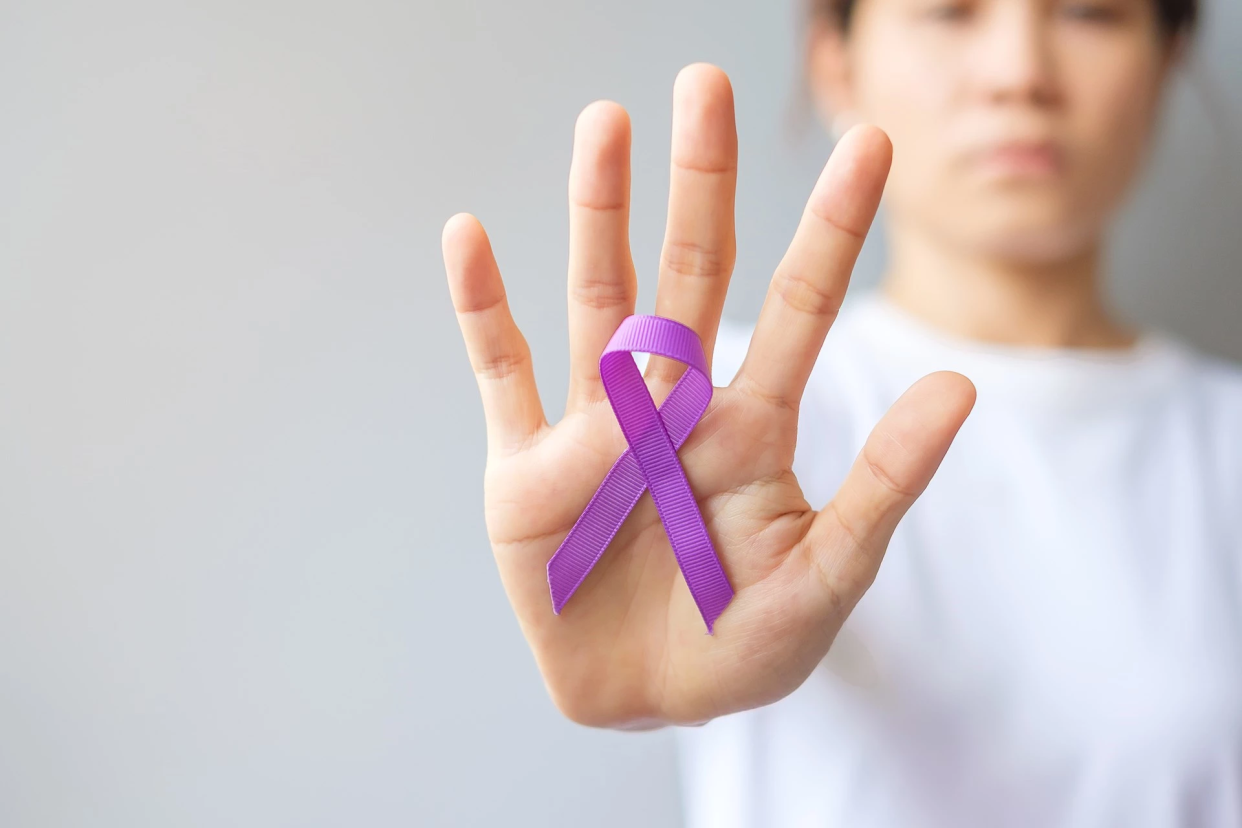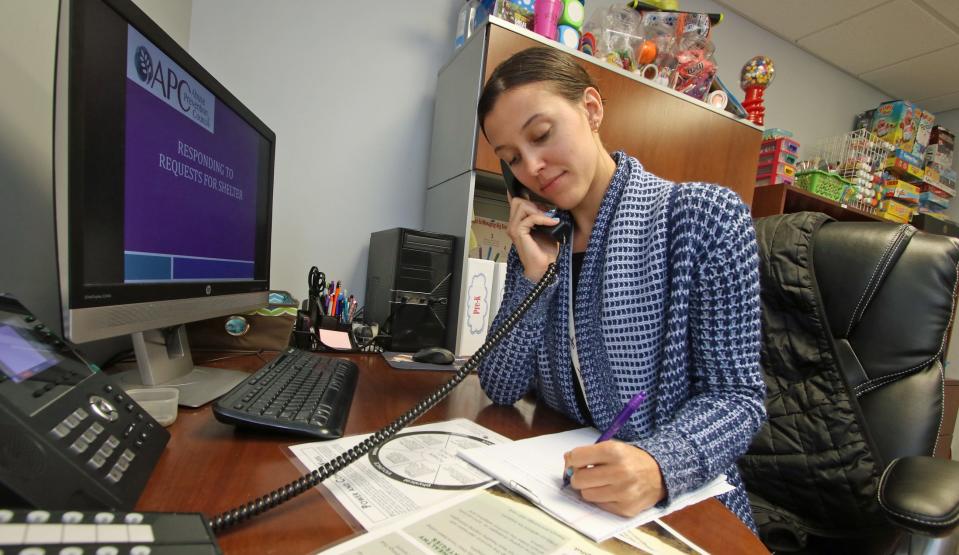Domestic violence cases on the rise

Deadly incidents of domestic violence are on the rise this year and Cleveland and Gaston counties combined have lost five lives in the first three months of 2023.
It's an alarming trend that is taking place around the state.
North Carolina Coalition Against Domestic Violence has found evidence of double the number of dv-related homicides so far in 2023 as compared to 2022. As of mid-March, the coalition has tracked 22 homicides in 2023, which puts the state on track to see over 100 Domestic violence related homicides this year.
Tragic endings
In January, Ashley Scoggins, who had taken out a restraining order on her ex-boyfriend Timothy Parson, was attacked by Parson in a store in Kings Mountain and stabbed to death, according to police. Investigators said Parson fled the scene and was captured several days later. He is currently being held in jail without bond, awaiting trial.
According to police and court documents, he had a history of violence, assault and abuse.
That same month, in Casar, law enforcement were called to the home of Clarice and David Owens for a domestic disturbance and according to police, Clarice turned the gun on her husband, killing him, and then when she turned the gun on a next door neighbor who had arrived to help, he shot and killed her. After an investigation, the neighbor is not facing any charges.
In March, in nearby Gaston County, police say Johnnie Andrew Walter Jr. shot Michelle Marcinkus Walter before killing himself. The couple was recently estranged, according to police.
Patterns of abuse
Cathy Robertson, with the Cleveland County Abuse Prevention Council, said often what people see, such as in the recent cases, is the end result of an ongoing problem.
“We see incidents of domestic violence reported so I think people tend to think of domestic violence as an incident, but it's actually a dynamic that happens throughout a relationship where one person thinks they have the right to have power over another person in a lot of different ways,” Robertson said.
That might take the form of threats, put downs, financial control or physical violence.
Robertson said it is important for people to look for those power dynamics at the beginning of a relationship and see them as signs of an unhealthy relationship.
“Those dynamics start at the beginning of the relationship. Abusers are good at sucking them in and making it difficult for them to leave,” she said. “One of the preventions is knowledge about healthy relationships and what a healthy relationship looks like, and it is two partners working together. Not one partner telling another partner what the relationship should be.”
Robertson said there is usually a pattern in these types of relationships, and they often start out intensely romantic and get serious very quickly with words such as “soulmate” and “we were meant to be together,” frequently used.
“One person in that relationship has an idea of who the other person should be, and they have the right to expect and force that person into that perfect mold of soulmate or perfect partner,” Robertson said. “None of us are perfect so in that relationship there's building tension because they can’t meet the expectations of the other person. The abuser eventually lashes out. It might not be in a physical way to start with. But after that, whatever that explosion is, there's a honeymoon period, and things go back to being great like at the beginning of the relationship.”
The abuser continues to have unrealistic expectations, and those explosions get more and more dangerous or physical.
“People who are abused are kind of used to walking on eggshells around an abuser,” she said.
Offering support
Robertson said it’s important for friends and families of victims to understand that the victim has to leave the relationship on their own terms and when they’re ready.
She emphasized that abuse can happen to anyone, man or woman.
The best thing loved ones can do, she said, is to offer support to the victim and support them in making their own decisions.
“Letting them know it's not their fault is more important than pressuring someone to leave because sometimes it makes it more dangerous for them,” Robertson said. “Women are 75% more likely to be murdered by their abuser when they are leaving their relationship.”
She said it’s more important to give them the tools to leave and let them know they’ll be supported than pressuring the victim. It’s important not to criticize the abuser and to keep them out of the conversation, except to let the person know that nothing they could have done would warrant the abuse.
Another key to eliminating domestic violence is education and teaching young people what healthy relationships look like.
“We don't only want to respond, we do want to prevent,” she said.
If people know someone who is a victim of domestic violence and are unsure of how best to help or support them, they can call the Abuse Prevention Council and talk to a counselor for free and be given pointers on what to do to help and not push the victim away.
Robertson said the agency receives around a thousand domestic violence or sexual assault calls to their crisis line a year.
They also offer a domestic violence shelter, free counseling services for victims of domestic violence, education services and court advocacy.
Robertson said in some cases, protective orders can be helpful, but not in all situations.
In the case of Timothy Parson and Ashley Scoggins, Scoggins had filed a protective order against him in the past. He still allegedly killed her.
“Protective orders are effective for people who respect the law,” Robertson said. “If someone is afraid of being arrested and having a record, a protective order can be very helpful. Victims are the experts on their situation. A victim might know whether a protective order can help and scare someone off, or if it's going to make someone more angry.”
Tools that may help victims of domestic violence or abuse include:
Referring them to practical services, such as department of social services, for help with childcare so they can get a job
Helping fill out protective orders or accompanying them through the legal system
Referring to abuse prevention council for counseling or support groups
Sometimes it’s necessary to report abuse to DSS when there are children in the home, and DSS can help connect victims to services and help them find safety for them and their children
Listening and believing the victim
Having a code word to use if the victim feels unsafe and needs help
Asking the person what they need
The Abuse Prevention Council also offers education to the community and will come out and talk to groups, including teens, on what healthy relationships are and prevention tips.
“We can come and talk to any group more in-depth,” Robertson said. “We do education not only on dynamics of domestic violence but we help do relationship education for teens and youth.”
More information can be found on the website, abusepreventioncouncil.org, or people can call the 24/7 crisis line at 704-481-0043.
Calls to law enforcement
Each year, law enforcement agencies around the county respond to thousands of domestic related calls.
Shelby officers were dispatched to 786 domestic disputes in 2022 with 82 of them resulting in some type of report, incident or arrest. According to Kings Mountain Police, officers responded to 1,062 calls broken down into three categories. There were 657 disturbance calls, 399 domestic disturbances and six domestic escorts.
Per Cleveland County Sheriff’s Office communication records, the number of domestic related calls during 2022 was 3,154.
Besides law enforcement, social workers get involved with families where children are exposed to domestic abuse in the home.
Katie Swanson, director of Cleveland County DSS, said 25% of their child welfare cases involve elements of domestic violence.
Swanson said social workers are trained in a module called “safe and together,” that emphasizes keeping children and victims safe as well as holding perpetrators accountable.
“We make sure staff is able to recognize those signs and work on accountability of the perpetrator,” Swanson said. “Out of all things we deal with in child welfare, it's the hardest dynamic to work with and bring about change. We know the research and what we've been trained is that people tend to go back, even if they leave or want to leave, they go back seven times.”
She said each time a victim returns, the abuse often gets more serious and more violent.

This article originally appeared on The Shelby Star: Domestic violence cases on the rise in Cleveland, Gaston counties

